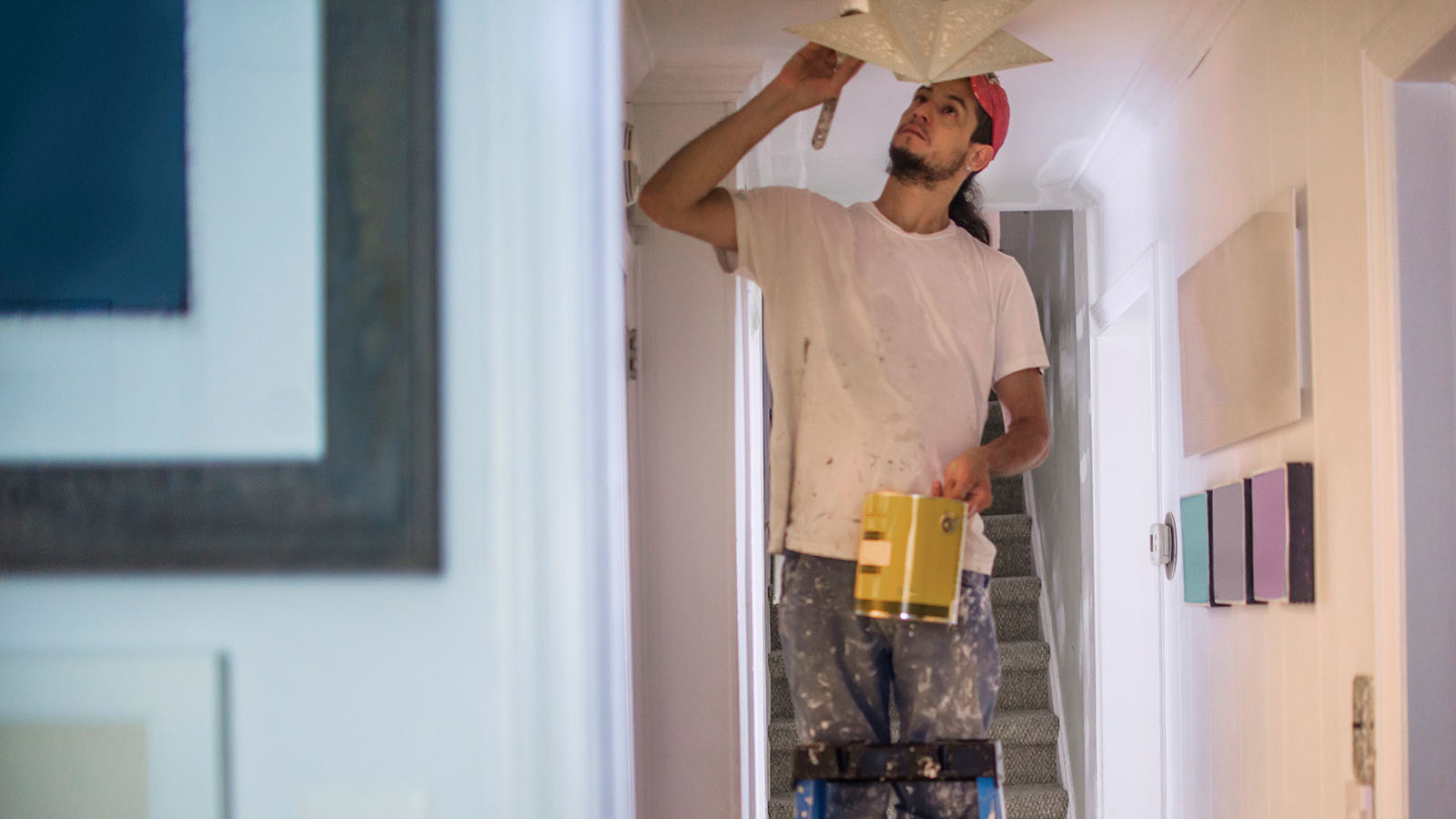
Do You Let Cut In Dry Before Rolling? (Explained)
Thinking about giving your room a fresh look? Painting can really transform a space, but getting that professional finish takes a bit of know-how.
One question that comes up a lot is do you let the cut-in areas dry before rolling.
It might seem like a small detail, but it can make a big difference in your final result.
Turns out, you should NOT let the cut-in dry before rolling.
In this post, I’ll explain why you should let cut-in dry before rolling, what happens if you let it dry, and the scenarios when you should actually let it dry before rolling.
Table of Contents
ToggleDo You Let Cut In Dry Before Rolling?

The short answer is no, you generally shouldn’t let the cut-in dry before rolling.
The idea is to keep a “wet edge” between the cut-in and the rolled paint. This way, you get a smooth transition without any awkward lines.
Also Read: Do You Prime Before Texture?
Here’s the general process:
- Cut in: Paint along the edges of the surface with a brush.
- Roll: Immediately start rolling the main area of the surface.
- Blend: While the cut-in and rolled paint are still wet, use the roller to gently blend the edges together.
But there are some exceptions. Quick-drying paints, like Benjamin Moore Aura, might need a different approach. We’ll get into that later.
What Happens If You Let Cut-In Dry?
Keeping a wet edge is super important if you want your paint job to look top-notch. When you blend wet cut-in paint with wet rolled paint, you get this seamless finish that looks like a pro did it.
But what if you let the cut-in dry before rolling?
Well, a few things could happen, and they might mess up your paint job:
Visible Lines And “Picture Framing”

The biggest problem you’ll notice is visible lines between the cut-in areas and the rolled parts.
People call this “picture framing” because it looks like there’s a frame around the edge of your wall. It happens because the dried cut-in paint creates a distinct edge that the roller can’t fully blend with the rest of the wall.
These lines can be particularly obvious in certain lighting conditions or with glossier paint finishes, and they can make your paint job look less professional.
Also Read: Can You Skim Coat Over Wallpaper?
Texture Inconsistencies
Another problem that can happen is a difference in texture between the cut-in and rolled areas. Brushes used for cutting in tend to leave a smoother finish, while rollers create a slightly bumpy or stippled effect.
When you let the cut-in dry, these texture differences become a lot more noticeable.
The result is a wall with noticeable variations in texture, which can be especially evident in areas with strong lighting or on walls with a glossy finish.
This inconsistency can detract from the overall quality of your paint job.
Color Variations
This one’s not always obvious, but there’s a chance the color might look a bit different between the dried cut-in paint and the fresh rolled areas.
It’s more likely to happen with deeper or brighter colors because the way paint dries can slightly change how it looks in the end.
You might end up with a wall that looks like a subtle patchwork of almost-but-not-quite-matching colors – definitely not the uniform, professional finish you were aiming for!
Tips For Different Paint Sheens
The shine level of your paint can affect how forgiving it is if the cut-in dries before rolling.
Flat and eggshell finishes are usually more forgiving.
If you end up with some dried cut-in areas before rolling with these sheens, you might not notice the differences as much.
But when you’re dealing with satin, semi-gloss, or glossy finishes, you’ve got to be more careful about keeping that wet edge. These shinier paints reflect more light, so any inconsistencies in texture or how you apply it will be more noticeable.
When you’re working with these higher-sheen paints, it’s extra important to work in smaller sections and keep everything wet as you go.
When Is It Ok To Let Cut-In Dry Before Rolling?
Now, even though keeping a wet edge is usually the way to go, there are times when it’s okay (or even better) to let the cut-in dry before rolling.
Some fast-drying paints, like Benjamin Moore Aura, are actually made to be used with the cut-in allowed to dry first. These paints form a skin quickly, and if you try to blend wet paint with paint that’s starting to dry, you can end up pulling the paint and getting an uneven finish.
If you’re putting on multiple coats of paint, it can be fine to let the cut-in dry between coats.
In this case, you’d cut in and roll each coat separately, giving it plenty of time to dry in between.
This can be really helpful when you’re making a big color change and need really good coverage.
Some painting techniques, like back-rolling, can also work well with dried cut-in areas.
With this method, you cut in and let it dry, then roll the whole wall and immediately roll over it again with very light pressure to even out the texture.
Also Read: How we Prep Walls for Painting After Removing Wallpaper
Wrapping Up
So, there you have it! When it comes to letting cut-in areas dry before rolling, there’s no one-size-fits-all answer.
While keeping a wet edge is usually the best way to get that smooth, pro-looking finish, there are times when letting the cut-in dry can work well too.
The key is understanding your paint and the look you’re going for, and then decide.
FAQs
Can You Cut In And Paint The Next Day?
No. It’s generally not recommended to cut in and paint the next day. You should try to maintain a wet edge between the cut-in and rolled paint.
Do I Need To Cut In Second Coat Of Paint?
Yes, you need to cut in the second coat of paint. This helps to ensure a clean, even finish and prevents the second coat from overlapping onto the first.
Our Blogging Expert

Jairo Ramirez has been in the painting industry for over a decade and has served hundreds of customers across the greater Richmond, VA area.
Our Locations
Painting in Richmond, VA
Serving Richmond
& the Central VA Area
Mon-Fri 8am – 6pm
Sat-Sun 8am – 5pm







